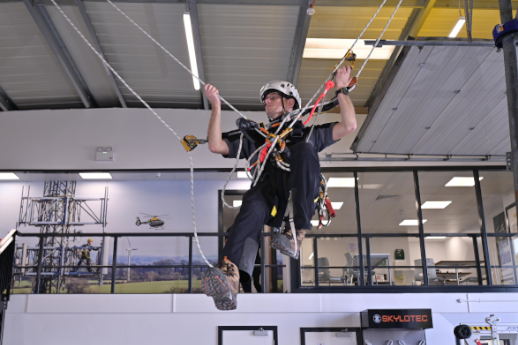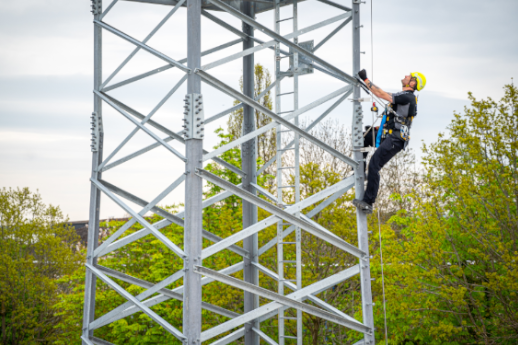

Working at Height Training

The expertise your people need while working at height
Working at height involves accessing work locations which have an inherent risk of falling. It is not surprising that falling from height is the leading cause of workplace fatalities due to its prevalence in almost every industry sector, and the severe consequences of an accident occurring. However, there are numerous access systems to help mitigate the risk, from the basic to very complex. The access system chosen should be based on a thorough risk assessment, including the practicalities of completing a work task whilst using a particular system.
-
Collective – Protects more than one person
• Scaffold Platforms
• Mobile Elevated Work Platforms (MEWPs)
• Building Maintenance Unit (BMU) Cradles
• Guard rails, Barriered Platforms/Rooftops
• Parapet Walls
• Safety Netting, Airbags, Padded systems
-
Personal – Protects the individual
• Work restraint
• Fall Arrest systems
• Work Positioning
• Industrial Rope Access
Personal systems require 3 fundamental components which should be appropriate for the fall protection system:
- Anchors
- Connecting Lanyards/Devices
- Harness

Access systems and personal fall protection equipment
The variety of access systems and personal fall protection equipment make it paramount that those conducting risk assessments, planning works, and ultimately using the equipment, are trained and competent to do so. We provide a range of work at height training, courses and services, focusing mainly on the higher risk area of – Personal Fall Protection Systems. These access systems require more in-depth user knowledge and a safe learning environment to practice techniques under supervision.
Watch this short video tutorial below about fall factors when utilising personal fall protection systems and click here to find out about our working at height facilities in our safety centres.
-
working at height training video
-
Rooftop Safety Training
You will be given a good understanding of Working at Height Regulations along with other relevant legislation which ties into these regulations and how to apply them in the workplace.
More -
Telecoms Climber Training
Working as a climber in the telecoms industry will mean that you are likely to require a range of work at height training courses Telecoms Climber Training is designed for your staff who may be involved in installation and maintenance of telecoms systems across the UK.
More -
Warehouse Safety Training
The safety of your staff is our priority, we have developed a range of courses to suit your needs, from basic Rack Access courses, all the way through to S-Cape instructor.
More -
IRATA and Rope Access Training
Rope access can be the ideal solution when it comes to working at heights and in restricted spaces. Our IRATA instructors have years of industry experience in rope access, and aim to go above and beyond the IRATA syllabus', preparing delegates for industrial rope access operational work.
More -
Rescue from Height Training
Any work at height access system will require a viable rescue plan and like access systems, this could be very basic or quite complicated, requiring multiple stages and personnel. Therefore, when planning work at height it is important to assess and devise the most sensible and practical means of rescuing an incapacitated worker
More -
Ladder Safety Training
Ladder Safety Training course is accredited by the Ladder Association which is a standard recognised nationally throughout the UK.
More -
PPE Inspection Training
Know your legal duty to inspect items of PPE. These courses are designed to give your employees the knowledge they need to properly inspect an item of Personal Protection Equipment (PPE) and confidently judge its condition, and decide whether it should be kept in service.
More -
Working at Height Training
Working at height involves accessing work locations which have an inherent risk of falling. It is not surprising that falling from height is the leading cause of workplace fatalities in almost every industry sector, With our expertise we can train you or your team all you need to know to work at height safely and professionally.
More